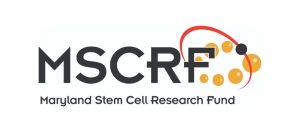 by: Karuga Koinange – Brian Jamieson founded Diagnostics Biochips to unlock the inner workings of the brain.
by: Karuga Koinange – Brian Jamieson founded Diagnostics Biochips to unlock the inner workings of the brain.
Based in Glen Burnie, the medical equipment manufacturing company develops tiny sensors that can be implanted to study electrical brain activity. The goal? To help find cures for neurological diseases like Parkinson’s, epilepsy and others.
Diagnostic Biochips also offers a data analysis platform called DBCloud that tracks and organizes the vast neural activity captured by its sensors. Together, these tools give researchers a window into what Jamieson describes as the brain’s “matrix.”
“If you’re probing a network or a computer and you want to see the 1s and 0s that make up the basic operation of a microprocessor, it’s the same thing with your brain,” Jamieson said. “What is the basic underlying machine-level code of your brain? It’s not a perfect metaphor, but it has some of the same characteristics in that you have all these basic elements that are connected.”
A loan that led to a new line of business
The State of Maryland’s venture capital arm, TEDCO, was one of the first to bet on Diagnostic Biochips, providing a seed investment that helped bring the company to life in 2013.
When the company first launched, it focused on building tools for in vivo applications, i.e., research with live animals. After a decade in this line of business, Jamieson had aspirations to scale up.
In 2023, he turned his attention to advanced stem cell models such as pluripotent stem cells (known as iPSCs) and 3D cultures called organoids. Brain organoid models are miniature, lab-grown versions of the human brain small enough to fit in a petri dish that replicate key properties of a developing, normal or diseased brain. Using these models, researchers can drastically boost the volume and efficiency of their data collection.
“Instead of doing individual surgeries on animals, now we’re scanning 96 brains at a time,” Jamieson said.
To support this pivot, Diagnostic Biochips started seeking funding for stem cell research. That search led Jamieson to apply for the Maryland Stem Cell Research Fund (MSCRF) in December 2024.
Click here to continue reading.
